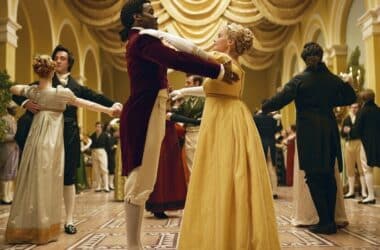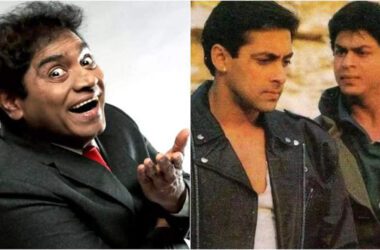[ad_1]
For about a decade, people in the New York art and fashion scene have relied on Eric Wrenn, an unassuming designer known for his minimalist touch, to help shape the images of their brands.
Mr. Wrenn, 38, has worked on ad campaigns, logos, books, websites, stationery, business cards and invitations to runway shows. Through it all he has kept a low profile, but his client list reads like a who’s who of downtown bluechips.
“Eric feels like an industry secret,” said Emily Bode Aujla, the designer and founder of the brand Bode.
“He has an art-world sensibility, and talking with him about a project can feel more like a therapy session,” she continued. “I lean on Eric to help me conceptualize Bode’s entire brand identity. When I hear a brand is working with him, it’s like: ‘Oh, they know.’”
As Bode was becoming the men’s wear brand of the moment, Mr. Wrenn remade its logo into something spare yet punchy. And when the gender-fluid fashion brand Eckhaus Latta was barely known, he started an enduring creative collaboration with its founders.
The invitations he designed for one of the brand’s early runway shows were printed on Ziploc bags. He went on to direct nearly all their campaigns, including the provocative ads featuring photos by Heji Shin of couples actually having sex.
Mr. Wrenn has also lent his sensibilities to books by the artists Glenn Ligon, Wade Guyton, Jessi Reaves and Seth Price; his other art-world clients include the Greene Naftali gallery and Artists Space.
He became a player in the downtown scene at age 28, when he was hired as Artforum’s design director, a position he held until 2020. Magazine covers he oversaw featured the art of Jeff Koons, Rem Koolhaas, Susan Cianciolo and Ms. Shin.
“To work with artists, you have to understand them, and that’s why I trust Eric,” Ms. Shin said. “His style is minimalistic yet confident. And he’s sensitive to what something needs — if it needs anything at all — which is also an act of confidence.”
“He’s an insider secret tip,” she added. “He’s very traditional and his focus is on the work.”
Mr. Wrenn’s fingerprints also appeared on the debut album of Sophie, the influential hyperpop artist, whom he met in Berlin. As part of his collaboration with the musician, who died in 2021 at age 34, he helped pick the distinctive typeface used for her name.
The British designer Martine Rose hired him to refresh her brand’s logo and visual identity, and asked him to direct an ad campaign photographed by Dick Jewell. Mr. Wrenn also designed the menus and swizzle sticks for the River, an art- and fashion-world haunt in Manhattan’s Chinatown.
During a recent interview in his airy office at the Cable Building in the NoHo neighborhood of Manhattan, he seemed to writhe on his couch as he adjusted to the experience of discussing his work.
“I don’t think people come to me because they know what they want,” said Mr. Wrenn, who was wearing a blue cap embossed with the folksy Bodega Bay Oyster Company logo. “I help people figure out what they want and then I make that thing for them. I try to help crystallize an idea for someone — an idea that is formed but not quite there.”
When asked to describe his signature look, he was silent for nearly a full minute before responding. “I try to give someone a design that says something about their brand, but that also doesn’t say too much,” he said. “The idea is you say something without saying anything.”
His desk was partly covered with stationery he had recently designed for Empty Gallery, an art gallery in Hong Kong. It featured soft eggshell-textured paper stock of minutely differing weights and business cards accented with black edges.
He sat at his computer and clicked through some of his designs and campaigns to show his thinking behind them. He politely declined to open the file labeled “NIKE BODE.”
Scrolling past imagery of Sophie’s vinyl LP “Oil of Every Pearl’s Un-Insides,” he said: “For the album’s gatefold, I was inspired a little bit by the gatefold in Michael Jackson’s ‘Thriller.’”
As Mr. Wrenn rose to prepare an espresso, he noted a frame on the wall that contained a sheaf of unadorned black paper. It was a Comme des Garçons runway invitation from 1982. “These old CDG show invitations are so hard to find,” he said. “To me, it’s an incredible minimalistic artwork to its own.”
Before Mr. Wrenn became a minimalistic George Lois to Manhattan’s downtown creative set, he grew up in the suburbs of Detroit. His mother was a high school teacher and his father was a computer software marketer. “My earliest memory is of an Amoco gas station logo I saw from the back of a car when I was a boy,” he said.
He moved to New York at 18 to study at Pratt Institute. His first branding agency job after graduation was with the firm Wolff Olins. “It was a crazy time of people eating Souen and spraying liquid aminos on salads,” he said.
As he worked freelance on the side, two of his first clients were Mike Eckhaus and Zoe Latta, who were just getting their label off the ground. After designing a logo for them on his laptop from his bedroom, he went on to develop their clothing tags, website, ad campaigns and invitations to their must-see shows at New York Fashion Week.
“We first saw Eric’s work on a Tumblr account,” Ms. Latta recalled, referring to a student project he had made at Pratt. “He’d done these Barneys ads, but done how you’d see ads in windows for a grocery store. The work had this anonymous sensibility and we had no idea who made it at first.”
“If Eric has maintained an element of not being easily accessible, or being a word-of-mouth guy,” Mr. Eckhaus said, “he’s had that analog vibe from the start.”
On a recent afternoon, Mr. Wrenn visited the Strand bookstore. He was on a mission to find something very particular. “It’s for a project I can’t talk about,” he said, “but I’m looking for an old piece of paper inside of an old book.”
Wearing his blue cap and a trench coat, Mr. Wrenn scoured the stacks of vintage art books. He pulled one off the shelf and looked it over.
“Not old enough,” he said. “No, this is all too nice.”
He finally found what he was looking for in a 1950s hardcover published by Abrams, “Art Treasures of the Uffizi and Pitti.” It was in the back of the book, one of those blank pages known as a flyleaf.
“What have I been looking for?” Mr. Wrenn said. “I don’t know. Something blank. A page that looks like nothing.”
Source link








